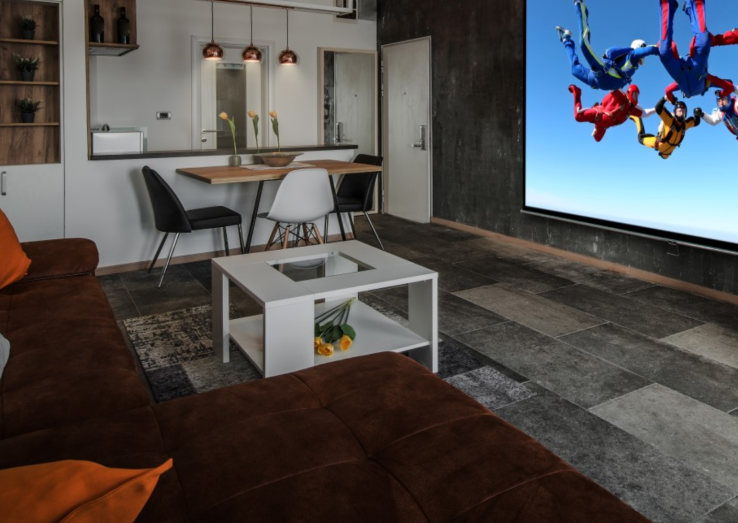

If you’re among those who use a projector for your home theater, you haven’t really had a great option for jumping on the 4K bandwagon, and you might be feeling left out now that the high-resolution tech is more common among TV manufacturers. But now there’s a great, relatively affordable way to get onboard 4K with a projection-based setup, thanks to Optoma’s new UHD60.
The UHD60 is the lower priced of two new 4K projectors Optoma first revealed at CES, and recently put on sale. Priced at $1,999, the UHD60 offers 4K thanks to a new Texas Instruments DLP chip. And while it’s true that this chip actually uses some software processing to double the resolution of its actual 2,716 x 1,528 output signal, thus achieving UHD, you’ll never know you’re not looking at a true 4K image – even if you’re already used to a 4K LCD or OLED TV.
I’ve been testing the Optoma UHD60 for a couple of weeks now, and it has really blown me away in terms of how much of a difference it makes vs. even very good full HD resolution projector hardware. The difference is immediately apparent, offering a sharpness that to my eyes was similar to the difference between Retina resolution and what came before on Apple computers and smartphones. Included below are some images, and while it’s hard to convey the effect of actually seeing it in person, keep in mind that this is being displayed at about 140-inches on a standard, white-painted wall – during the day with some light leak from outside.
Getting that image quality wasn’t hard, either: Optoma’s focusing controls (on the lens itself) and zoom and height adjustment features were all easy to find and use, and I had the picture geometry and orientation tuned to my liking within about five minutes of unboxing the unit.
Another highlight here is brightness. The UHD60 boasts 3,000 lumens, which makes for a very bright picture that’s visible even during the daytime with some ambient light filtering in. It also delivers very clear blacks, both on a portable Epson screen made for projector use, and on a blank white wall. Wall color tonal presets are also built-in, so you can configure it for a range of projection surfaces.
Combined with sources like the Nvidia Shield TV, which outputs 4K HDR content from Netflix, Amazon Video and Google Play Movies, this is the best projector I’ve ever used, and a way to finally upgrade to 4K for projector-based home theaters. It also worked great with content from the PlayStation 4 Pro, as well as my Bell Fibe TV 4K box, and from a high-end Falcon Tiki gaming PC powered by an Nvidia GTX 1080 GPU.
Here’s the bottom line: If you’ve been waiting for 4K in a projector, this is the one to get. It’s about double the size of your average home theater projector, so be cognizant of the physical footprint, but it supports a wide range of mounting options and projection angles, so you should be able to get it working for your existing setup with relative ease. The Optoma UHD60 delivers unrivaled image quality at this price (and beats a lot of higher priced options), while also offering HDR support and decent onboard speakers.

